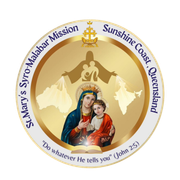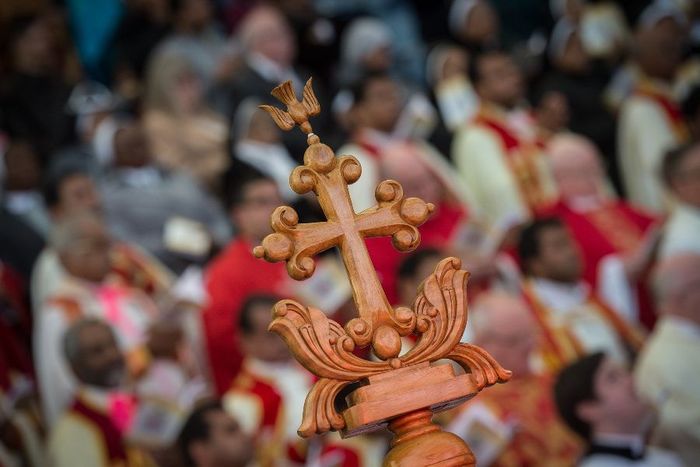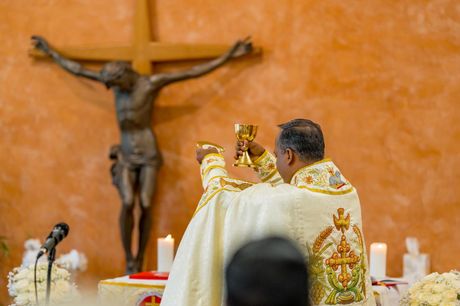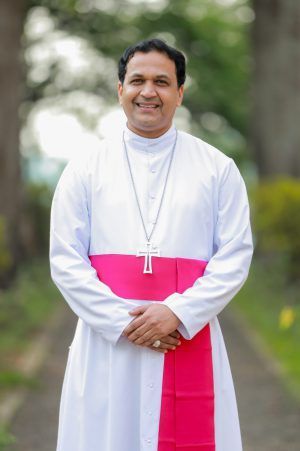info@santhomparishmelb.org.au
+61 408 267 777
History of Syro-Malabar Church
The Syro-Malabar Church is one of the 23 sui iuris (autonomous) Oriental/Eastern Catholic Churches in full communion with the Apostolic See of Rome. It is the second largest Oriental Catholic Church, the largest being the Ukrainian Church. Elevated as a Major Archiepiscopal Church in 1992 by Pope John Paul II, the Syro-Malabar Church is one of the most vibrant Catholic Churches in the world with over four million believers who have surpassed the geographical boundaries of Kerala and have spread across the world.
The Syro-Malabar Church is known for its deep-rooted spirituality and high rate of vocation to the priesthood and consecrated life. It is currently headed by the Major Archbishop of Ernakulam-Angamaly, Mar George Cardinal Alencherry. The Syro-Malabar Church is governed by the ‘Code of Canons of the Eastern Churches’ and it follows the East-Syrian liturgy which dates back to the 3rd century.
Nasrani-Marthoman
Syro-Malabar Catholics trace their origins to the evangelistic efforts of St. Thomas the Apostle, who arrived at Kodungallur, Kerala, India, in 52 AD. Hence, traditionally they are considered to be part of the ‘Saint Thomas Christians’ who were a group of Christians from the Malabar Coast (now Kerala) in South India. St. Thomas was martyred at Mylapur, Chennai, India, in 72 AD. Historically, the community of the Saint Thomas Christians was a part of the ‘Church of the East’ until the Schism of 1552, which split the ‘Church of the East’ into two factions, the independent ‘Assyrian Church of the East’ and the ‘Chaldean Catholic Church’ which was in full communion with Rome. Until the late 16th century Saint Thomas Christians were under the ecclesiastical governance of the Patriarch of the East Syrian Chaldean Catholic Church who also had the authority to appoint Bishops to the Christian communities in India under him.
Origins
The arrival of the Portuguese missionaries in India in the 16th century marked a new era in the life of the Saint Thomas Christians as they came in close contact with the Western Catholic Church. The Portuguese established two Latin dioceses one in Goa(1534) and the other in Cochin(1558), expecting to bring the Saint Thomas Christians under their jurisdiction. Portuguese Padroado’s overtures to bring the Saint Thomas Christians into the Catholic Church created many rifts in the community. In 1599, at the Synod of Diamper they were hierarchically brought under the jurisdiction of the Latin Bishops. In 1653 at the ‘Coonan Cross Oath’ at Mattancherry, many St. Thomas Christians vowed to disobey the Latin hierarchy and thus for the first time divisions appeared among the Saint Thomas Christians. The majority of the Saint Thomas Christians who joined in formal communion with Rome formed the Syro-Malabar Church which is distinct from the Western Latin Church. Those who remained opposed to the Portuguese ecclesiastical hierarchy encountered the Jacobite Patriarch and eventually became Jacobites, a section of which later reunited with the Catholic Communion in 1930 and is now being known as the Syro- Malankara Church.
Syro-Malabar Eparchy of Melbourne
Holy Father Pope Leo XIII, through his bull Quod jam pridem (1887), separated the Syrian Catholics of Malabar from Padroado and the Vicariate of Verapoly, establishing the Apostolic Vicariates of Trichur and Kottayam. The Syro-Malabar Church hierarchy was officially formed in 1923, driving its rapid growth.
With significant contributions to spirituality, education, and social welfare in Kerala, the Syro-Malabar Church expanded globally. In Australia, The Syro-Malabar Eparchy of St Thomas the Apostle – Melbourne was established by Pope Francis on 23 December 2013, making it the second Syro-Malabar Eparchy outside India. Bishop Bosco Puthur was its first Eparch, and Bishop John Panamthottathil now leads the growing Syro-Malabar community in Australia.
Faith
Scripture
Community
About us
We welcome you all to be part of our community.

Useful Links
Contact Info
P: +61 408 267 777
E: office.sunshinecoast@syromalabar.org.au
A: 61 Edmund Street, Moffat Beach, QLD 4551, Australia
Join Our Parish
All Rights Reserved | Website powered by Studiograph




